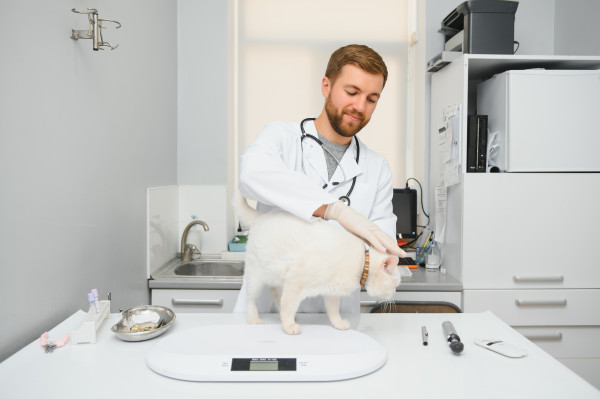
Want Your Pet to Live Longer? Start with This Simple Health Check
In the first part of this series, we introduced Body Condition Scoring (BCS) as a simple but powerful tool that empowers pet owners and veterinary professionals to evaluate a pet’s physical health beyond a number on the scale. In this second article, we’ll take a deeper dive into why routine and accurate BCS assessments are more than a best practice; they are foundational to preventing chronic disease, preserving quality of life, and supporting longevity in dogs and cats.
The Chronic Disease Burden of Pet Obesity
One of the most compelling reasons to monitor and manage BCS is the overwhelming evidence linking obesity in pets to chronic diseases. Obesity is now recognized as the most common preventable disease in companion animals, affecting an estimated 56% of dogs and 60% of cats in the United States alone.
Excess body fat is not just an aesthetic issue; it’s metabolically active tissue that drives systemic inflammation and alters hormonal balance, leading to increased risks of:
- Certain cancers, including transitional cell carcinoma and mammary tumors
Early detection of increasing BCS, especially when pets move from an ideal score of 4–5 out of 9 to 6 out of 9 or higher, can serve as a red flag, allowing for timely dietary, lifestyle, and veterinary interventions that may slow or prevent disease progression.

Photo by LightFieldStudios
Lifespan and Quality of Life
BCS is not just about avoiding disease—it’s about enhancing life. A landmark 14-year longitudinal study found that Labrador Retrievers kept at a lean body condition (BCS 4–5 out of 9) lived a median of 1.8 years longer than their overweight counterparts. Beyond lifespan, lean dogs showed delayed onset of osteoarthritis, lower incidence of chronic diseases, and required fewer medical interventions over their lifetime compared to overweight dogs.
Quality of life is harder to quantify, but equally important. Overweight pets often experience reduced mobility, fatigue, increased joint pain, and lower willingness to engage in play or physical activity. Accurate BCS assessments can guide tailored feeding and exercise plans that support an active, pain-free lifestyle. For senior pets especially, preserving lean muscle mass and avoiding excess fat can dramatically improve mobility and daily comfort.
The Importance of Routine Monitoring
Routine BCS assessments should become part of every pet wellness visit and, ideally, a monthly habit for pet owners at home. Tracking BCS over time offers insight into subtle changes in condition that might otherwise go unnoticed.
For example:
- A pet with early-stage chronic kidney disease may begin to lose muscle mass, resulting in a lower BCS.
- A neutered cat’s metabolic needs change, often requiring a reduction in calories to maintain an ideal score.
- A pet on long-term corticosteroids or a weight-promoting medication may begin to gain weight rapidly without owner awareness.
A regular BCS routine allows for early intervention and prevents the slow progression into clinical obesity—or the opposite, cachexia, which is the loss of muscle mass without losing fat mass. Combined with weight measurements and veterinary diagnostics, BCS becomes a critical data point in whole-pet care.

Photo by Sedrik2007
Empowering Pet Parents
BCS offers a language that empowers pet parents to participate in care decisions grounded in observation and science, not just affection or assumptions. When owners understand what a “4 out of 9” actually looks and feels like, they are more likely to take proactive action, support veterinary guidance, and resist overfeeding habits that may come from love but lead to harm.
Most importantly, BCS replaces guilt with guidance. It’s not about shame; it’s about science and compassion. By focusing on how our pets feel rather than simply how they look, we provide them with the best shot at a long, comfortable, and joyful life.
Follow us on LinkedIn for the latest updates on all things happening here at BSM Partners.
About the Author
Dr. Katy Miller works as the Director of Veterinary Services at BSM Partners. She earned her veterinary degree at Ross University and completed her clinical year at Louisiana State University. She previously served for 11 years as the Director of Dog and Cat Health and Nutrition for Mud Bay where she earned multiple certifications and specialized in pet food nutrition, prior to which she practiced general and emergency medicine for seven years. She is also a competitive three-day eventer, licensed falconer, and claims only two (Golden and Mini Doxie) of their nine dogs.
This content is the property of BSM Partners. Reproduction or retransmission or repurposing of any portion of this content is expressly prohibited without the approval of BSM Partners and is governed by the terms and conditions explained here.